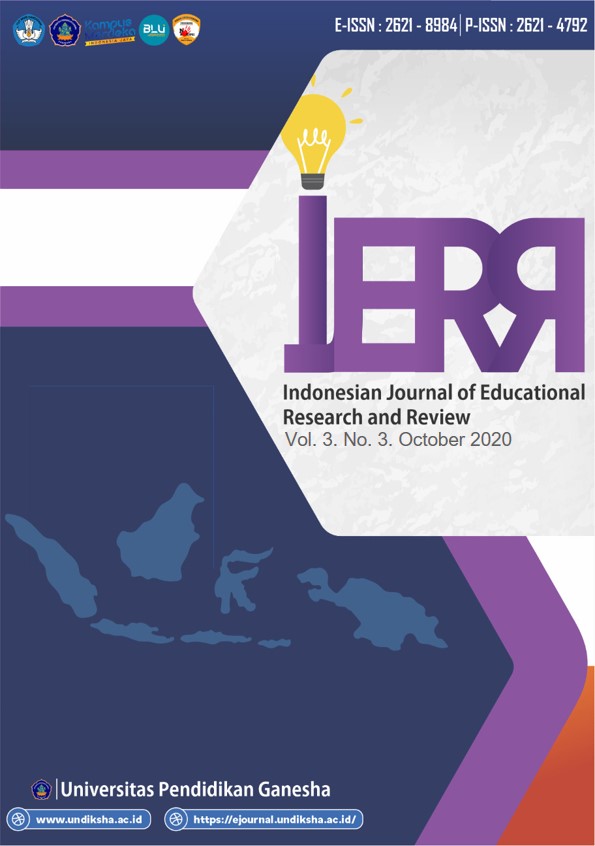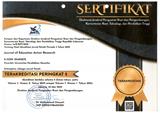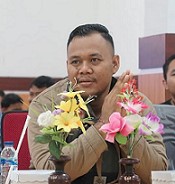The Uses Of Code Mixing On Facebook By The Students In English Language Education Department
DOI:
https://doi.org/10.23887/ijerr.v3i3.27662Kata Kunci:
code-mixing, facebook and languageAbstrak
This study intended to analyze types of code-mixing and determine the motive of code-mixing used by the seventh-semester students of English Language Education on Facebook. Descriptive qualitative was used as the design of this study since it focused on a single case of code-mixing. Therefore, this study only focused on Indonesia-English code-mixing used by the student. Moreover, the data were gained by observing students’ Facebook posts, comments, and Facebook stories. The data were also gained by interviewing the selected subject by using an interview guide. Furthermore, the collected data were analyzed by using Ho’s theory, Myusken’s theory, Hoffman’s theory, Hockett’s theory, and Saville-Troike’s theory. Based on data analysis, the result of the study showed that Lexical Word was the most frequently used by the student, with a total number of 41 (33%) from 142 occurrences. Meanwhile, talking about a particular topic was the most reason underlying student in using code-mixing on Facebook by 12 (27%) of the subject picked.
Referensi
Andre, R. (2018). Bahasa Indonesia-English Code-Mixing in Writing Business Emails: Understanding the Communicative Purpose. Lingua Cultura, 12(2), 117-121.
Carter, N., Bryant-Lukosius, D., DiCenso, A., Blythe, J., & Neville, A. J. (2014, September). The use of triangulation in qualitative research. In Oncology nursing forum (Vol. 41, No. 5).
Ho, J. W. Y. (2007). Code-mixing: Linguistic form and socio-cultural meaning. The International Journal of Language Society and Culture, 21, 1-8.
Jayanthi .(2019).An Anlysis of Code-Mixing in “WhatsApp” Messenger by The Students of English Language Education. Unpublished thesis: Singaraja.
Kurniawan, B. (2016). code-mixing on Facebook postings by EFL students: A small scale study at an SMP in Tangerang. Indonesian JELT, 11(2), 169-180.
Luke, J. Y. (2015). The use of code-mixing among Pamonanese in Parata Ndaya closed-group Facebook. Lingua Cultura, 9(1), 40-46.
Miles, M. B. & Huberman, A. M. (1984). Qualitative Data Analysis: A Sourcebook of New Methods. California; SAGE Publications Inc.
Muysken, P. (2000). Bilingual Speech: A Typology Of Code-Mixing. Cambridge University Press.
Purnamasari, N. M., Putra, I. N. A. J., & Suwastini, N. K. A. (2018). A desccriptive study on the use of code mixing by the english teacher at SMAN Bali Mandara in the academic year 2014/2015. Lingua Scientia, 23(2), 1-8.
Pratama, D. R., Suwandi, S., & Wardani, N. E. (2017). Code-mixing and Switching of the Novel Kukejar Cinta Ke Negeri Cina by Ninit Yunit. Humanus: Jurnal Ilmiah Ilmu-ilmu Humaniora, 16(1), 13-26.
Saville-Troike, M. (2008). The ethnography of communication: An introduction (Vol. 14). John Wiley & Sons.
Sridhar, S. N., & Sridhar, K. K. (1980). The Syntax and Psycholinguistics of Bilingual Code Mixing. Canadian Journal of Psychology/Revue canadienne de psychologie, 34(4), 407.
Sugiyono. (2013). Cara Mudah Menyusun: Skripsi, Tesis dan Disertasi. Yogyakarta: Alfabeta, CV
Wardhaugh, R. (2006). Introduction to Sociolinguistics. Fith Edition. Carlton. Victoria: Blackwell Publishing.
Wardhaugh, R. (1986). An introduction to sociolinguistics. Oxford: Blackwell
Unduhan
Diterbitkan
Cara Mengutip
Terbitan
Bagian
Lisensi
Authors who publish with the Indonesian Journal of Educational Research and Review (IJERR) agree to the following terms:
- Authors retain copyright and grant the journal the right of first publication with the work simultaneously licensed under a Creative Commons Attribution License (CC BY-SA 4.0) that allows others to share the work with an acknowledgment of the work's authorship and initial publication in this journal.
- Authors are able to enter into separate, additional contractual arrangements for the non-exclusive distribution of the journal's published version of the work (e.g., post it to an institutional repository or publish it in a book), with an acknowledgment of its initial publication in this journal.
- Authors are permitted and encouraged to post their work online (e.g., in institutional repositories or on their website) prior to and during the submission process, as it can lead to productive exchanges, as well as earlier and greater citation of published work. (See The Effect of Open Access)












